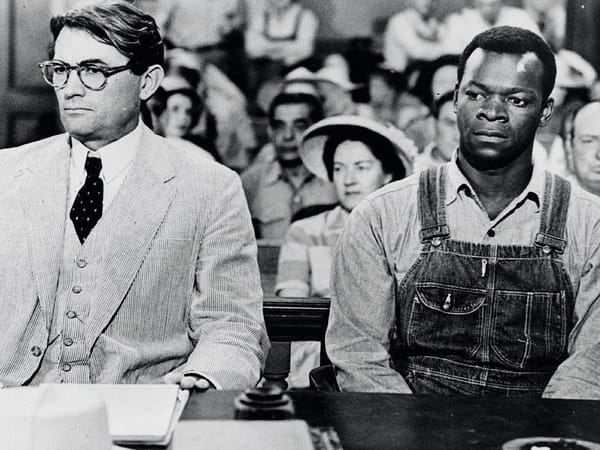Guillermo del Toro shows us the shape of his dreams in this fantasy romance
In The Shape of Water, Guillermo del Toro has created a complete fantasy world, in which the viewer is able to completely immerse themselves.

"Disobedience is one of the strongest signals of your conscience of what is right and what is wrong” said Guillermo del Toro when promoting his masterpiece Pan’s Labyrinth, “when you disobey in an intelligent way, you disobey in a natural way, it turns out to be more beneficial than blind obedience. Blind obedience castrates, negates, hides, and destroys what makes us human.” More than a decade on from the film that made his name in the world of cinema, he returns to the same themes – those of choice, duality, and the battle between natural chaos and artificial order – in The Shape of Water, a beautiful, twisted fairy-tale for our own age.
As usual with his films, del Toro asks us to suspend right from the off any sense of disbelief that may cling to us as we settle in our seats. Starting with a sequence in which the camera floats weightless through an apartment building flooded with water, The Shape of Water is a sensory experience like no other; throughout the two-hour runtime, del Toro bombards us with images and scenes of such beauty and intensity that to leave the cinema seems like an affront, since it necessitates breaking the delicate spell the film weaves.
As with Pan’s Labyrinth, set in Franco’s Spain, The Shape of Water is a film shaped by a strong sense of time and place: in this film the location is Baltimore, and the year is 1962. The Cold War is at its full height, racial discrimination is rife, and a mute woman called Eliza (Sally Hawkins) works as a cleaner at a top secret government facility. Her regular order is one day disrupted, when a new acquisition is brought into the laboratory by a glowering army colonel called Strickland (Michael Shannon) – it’s an amphibious humanoid, obtained from South America, where it was worshiped as a god, and played with beautiful physicality by regular del Toro collaborator Doug Jones.
From the off, Eliza is captivated with the creature; she begins a silent courtship, teaching him sign language and introducing him to the music of Benny Goodman in a series of wonderfully-crafted scenes. But, of course, this cannot last. With hopes the creature could give them the edge needed to succeed in the Space Race, the government orders his vivisection, and Eliza is forced to break him out – with the help of her closeted neighbour Giles (Richard Jenkins), Soviet spy Dr. Hoffstetler (Michael Stuhlbarg), and African-American co-worker Zelda (Octavia Spencer).
“As in his previous films, any notion of whimsy is undercut by an ever-present sense of violence”
As in del Toro’s previous films, any notion of fairy-tale whimsy is undercut by an ever-present threat of violence, as well as a raw sexuality that frequently intersperses the action. Del Toro is a director who knows that desire and lust are but two aspects of the same object, and this allows him to keep his characters from floating away on a sense of whimsy.
While there is ample acting talent in the supporting cast – Jenkins is particularly excellent in his role, all simmering anxiety and concealed tensions – the emotional centre of the film is Hawkins, whose performance as Eliza captivates. Unable to speak, she conveys her thoughts and feelings with subtle changes to facial expressions and body language – a hard-won achievement that she makes look effortless. Her Eliza manages to be both free-floating and grounded, going from scenes where she joyfully dances around the amphibian’s tank, to confronting Giles with sign language so pointed it revels her immense rage with perfect ease.
The Shape of Water is, ultimately, a film in thrall to the power of cinema, and the delicate but potent beauty it can create. Del Toro is clearly a director who is so obviously in love, both with his own creations, and those that came before him; The Shape of Water is indebted to both classic musical numbers of movies gone by and schlocky Universal Monsters from the B-movie era.
It’s not a perfect film, by any means: some of the plot elements don’t quite gel together, with some side-elements seeming superfluous; and the links del Toro draws between sexuality, race, and disability can seem ham-fisted. But ultimately, The Shape of Water is best enjoyed with the sense of weightlessness that comes through suspension of over-analysis; it’s a hand-crafted fantasy-world, build by a director who is at the height of his powers, both in terms of creativity and scale. To interrogate it too deeply would destroy its magic; it would be a shame.
“Seems like I was both both too early or too late for my life,” reflects Giles at one point – an illustrator living in a time of photography; a gay man existing during a period of hate. Luckily, for us, this film has arrived at the precise right moment: The Shape of Water is del Toro’s world, and you should take the time to live in it, even for a little while.
4 Stars
Dir: Guillermo del Toro. Script: Guillermo del Toro, Vanessa Taylor. Starring: Sally Hawkins; Michael Shannon; Richard Jenkins; Doug Jones. 123 minutes










